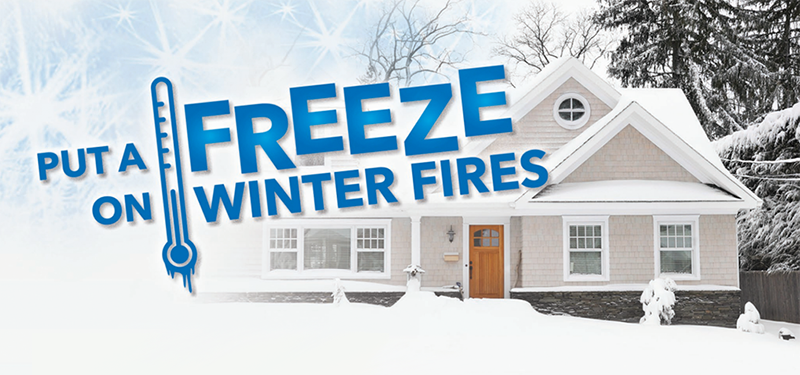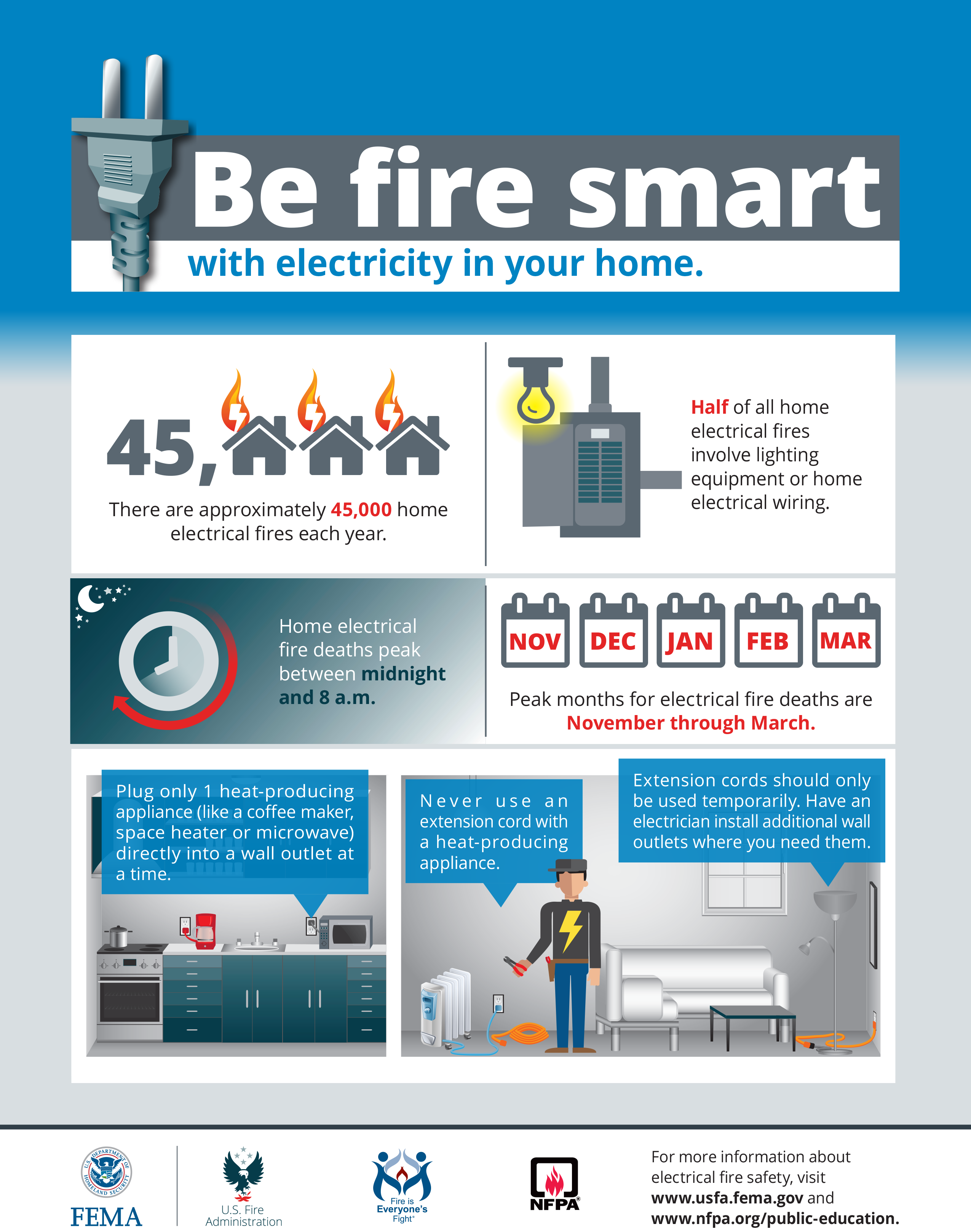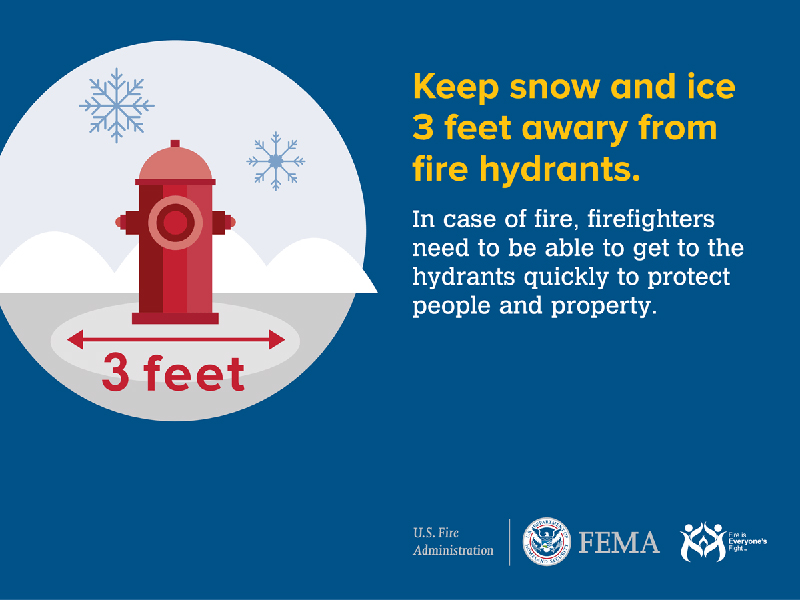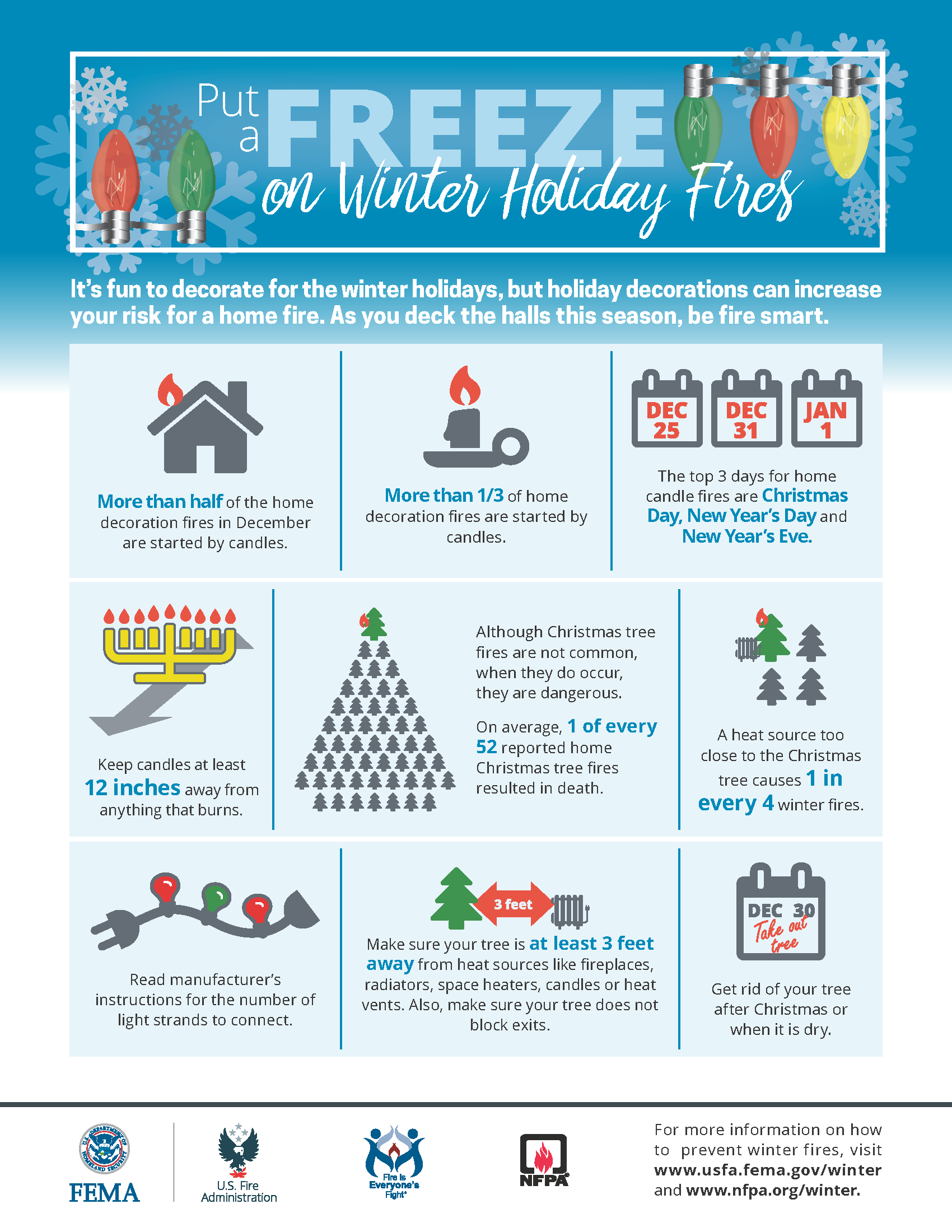
With cold weather, winter and the holidays approaching, we must remember that each season presents its own unique home fire safety concerns. With the cold months, you depend heavily on various heating appliances. Here are some tips to follow:
- Keep your furnace clean and check that the pilot light is working.
- Make sure you have a Carbon Monoxide detector in your home, ideally you should have one on each level of your home.
- If you use a space heater, keep it away from combustible materials, keep at least 3 ft of clearance in all directions around the heater, do not use an extension cord or surge protector to plug it in and make sure the power cord is in good condition before use.
- Have all alternative heating sources such as a wood stove examined by an expert to make sure they are functioning properly.
- Do not use the oven for heating.
- Clean and check fireplaces and chimneys regularly – burn only seasoned wood, avoid soft wood like pine which creates a build up of creosote in the chimney, which is the leading cause of chimney fires.
- During the holiday season, keep live Christmas trees watered – dry trees are an extreme fire hazard
- Keep all candles away from flammable materials – we recommend using battery powered flameless candles
With Christmas approaching, please read this safety brochure from the NFPA on Christmas Tree Safety then watch this video from the NFPA on why it is important to water your live tree:




Carbon Monoxide
Often called the invisible killer, carbon monoxide (CO) is an odorless, colorless gas created when fuels such as gasoline, wood, coal, propane, etc. do not burn completely. In the home, heating and cooking equipment that burn fuel are potential sources of CO. Carbon monoxide incidents are more common during the winter months, and in residential properties. More statistics on carbon monoxide incidents.
Winter storms
Most of the U.S. is at risk for winter storms, which can cause dangerous and sometimes life-threatening conditions. Blinding wind-driven snow, extreme cold, icy road conditions, downed trees and power lines can all wreak havoc on our daily schedules. Home fires occur more in the winter than in any other season, and heating equipment is involved in one of every six reported home fires, and one in every five home fire deaths.
Generators
Portable generators are useful during power outages, however, many homeowners are unaware that the improper use of portable generators can be risky. The most common dangers associated with portable generators are carbon monoxide (CO) poisoning, electrical shock or electrocution, and fire hazards. According to a 2013 Consumer Product Safety Commission report, half of the generator-related deaths happened in the four coldest months of the year, November through February, and portable generators were involved in the majority of carbon monoxide deaths involving engine-driven tools.
Candles
December is the peak time of year for home candle fires; the top two days for home candle fires are Christmas and Christmas Eve. Each year between 2013-2017, an average of 7,900 home candle fires were reported each year.
Electrical
Electrical home fires are a leading cause of home fires in the U.S. Roughly half of all home electrical fires involved electrical distribution or lighting equipment, while nearly another half involved other known types of equipment like washer or dryer fans, and portable or stationary space heaters. More statistics on electrical fires.
